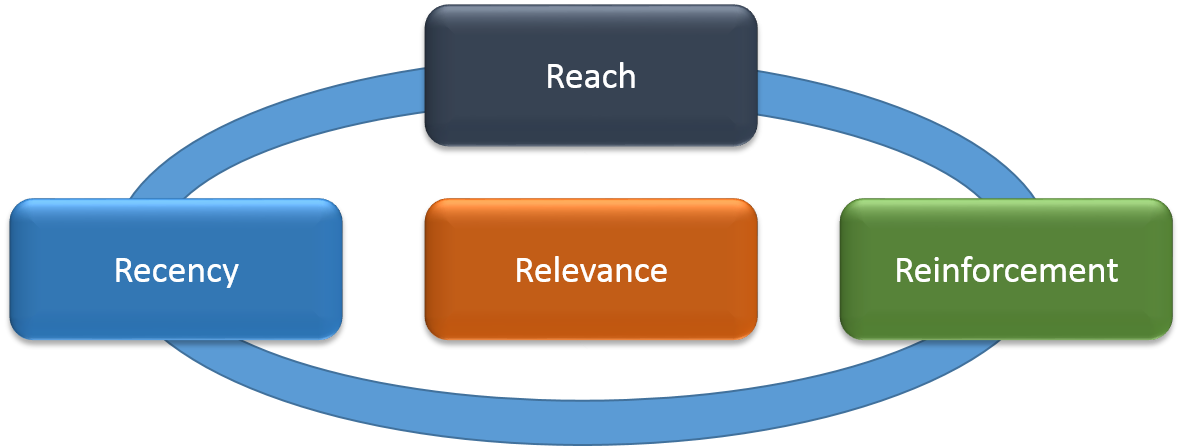 In a digital age, marketers have amazing options. Now we can remarket to users who abandon shopping carts, target users who are reading content that reveal relevant interests, and target paid advertising to Facebook users who share the same interests as those who have liked our brand page. Even TV advertising is becoming addressable with 60 MM + households now being addressable. We can even match our customers and website visitors in the Facebook exchange or to Twitter profiles and deliver promoted tweets to our users on their smartphones. Cross-screen marketing V1.0 is here.
In a digital age, marketers have amazing options. Now we can remarket to users who abandon shopping carts, target users who are reading content that reveal relevant interests, and target paid advertising to Facebook users who share the same interests as those who have liked our brand page. Even TV advertising is becoming addressable with 60 MM + households now being addressable. We can even match our customers and website visitors in the Facebook exchange or to Twitter profiles and deliver promoted tweets to our users on their smartphones. Cross-screen marketing V1.0 is here.
We are moving into a POST-DEMOGRAPHICS, data driven era for media strategy…where behavior-based media strategies offer RECENCY, RELEVANCE, and REINFORCEMENT targeting. Recency, because it has been proven that ads delivered closer to the upcoming purchase are more impactful. Relevance, because the right message to the right consumer at the right time and place is more valuable to the consumer, and reinforcement because most of the consumers who prefer your brand still buy your competitors and as many as half switch away over time.
My belief is that few big marketers are systematically evaluating a new over-arching data-driven media strategy. It is time for marketers to construct the experiments and, if successful, move significant portions of their ad budget into data-driven media strategies that deliver recency, relevance, and reinforcement.
In data driven marketing, there are pieces that must work together. Here is an overview:
Brand audience. Your brand audience (owned media visits, purchasers, newsletter signups, Facebook fans, Twitter followers, those searching for your brand, etc.) is the beating heart of a data-driven strategy. Their names and e-mail addresses become the basis for anonymized user matching to frequent shopper, TV viewer, digital users, and Acxiom-style database matching. Modeling such data leads to targeting communications to users who are lookalikes. Your brand audience also creates a two-way communication channel to reinforce their loyalties. Your owned media website will be your source of content that gets you high up in search results and is an attractor for traffic. Your insights for how to build the audience will come from web metrics and from the interests of your social media fans.
Recency. The next major component is to create a model that enables you to sense or predict when someone is about to go shopping based on targetable signals. The signals we have to work include selected digital behaviors, frequent shopper data used to model the likelihood of a purchase in the near future, social media conversations that are shopping related, use of an app the marketer or retailer creates, and location signals (geo-fencing, Foursquare check-ins, etc.). It is now possible to make your consumer advertising work as shopper marketing by delivering messages right before the shopping trip, even right on their smartphone as they enter the store. Yahoo reports “…implement mobile targeting that looks at consumers’ online signals of intent to purchase has produced up to 4x lift in conversions and 79% increase in ROI”.
Relevance. The components of relevance are:
- Preferences
- Need state or what I prefer to call “moments”
- Values and lifestyles
- Financial
Frequent shopper data, now matched to Facebook, many TV providers, and digital ad inventory helps us to target those who are persuadable (buy your type of product but not completely loyal to a given brand). Matching to large databases with credit-scoring information allows us to target those who can afford our product (e.g. Mercedes targeted to affluents). User interest profiles help to precisely target the creative version tonality and offers.
How does a marketer position themselves to succeed with data-driven marketing?
- Focus on what you hope to achieve. How will data-driven marketing improve marketing efficiency and effectiveness?
- Develop a big data strategy. What data streams will you leverage for marketing gain? How are they going to be connected? Create the infrastructure to manage your brand audience (customer or website) data, your ad response data, and implement a well-thought out tag management approach.
- Enumerate the plays in the playbook. What specific behavioral targeting options are available for you to choose from?
- Equip the organization. Someone needs to own this. They need staff with data science competencies. Create a culture of constant experimentation with a measurement approach that tells you if a campaign is working and if the brand is getting stronger as a result.
- Change the marketing research mindset. We are survey first, tuned to manage projects with beginnings and ends, and are more comfortable measuring the past than predicting the future. To join the data-driven marketing party, we must harvest insights and metrics from naturally occurring data, think more about prediction than report cards, and realize that marketing in a digital world calls for near real-time response systems that come from sources other than long-form surveys.
- You cannot control reach, but you can measure it. A behavioral media strategy is too complex to design the percent reach. Yet reach is important so you must measure it as an outcome and then adjust. However, don’t just think about consumer reach; consider shopper reach…what percent of those ready to buy are being reached by your brand messages?


Joel, great article, in human language as opposed to marketing speak. Lays the foundation and action points to adopt a new way of thinking to draw actionable insights that affect brand management and a communication and growth strategy.
thanks Ed!